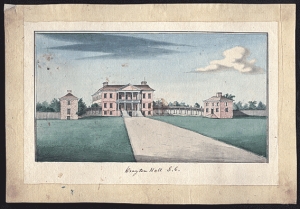
Born the youngest of three sons to Thomas and Anne Drayton at the family’s Magnolia Plantation in 1715, very little is known about John Drayton’s upbringing. In 1738, the twenty-three-year-old Drayton entered the public record through his purchase of a 350-acre tract of land located next to his birthplace on the Ashley River. Here, Drayton constructed Drayton Hall, a masterpiece of colonial architecture that was influenced by the classical design principles originally published by the Italian Renaissance architect Andrea Palladio (1508–1580) in I Quattro Libri Dell’Architettura (1570). The architect of Drayton Hall remains a mystery. The recent discovery, however, of a list of early eighteenth-century pattern books present within Drayton Hall’s eighteenth-century library—works by Colen Campbell, William Salmon, Isaac Ware, James Gibbs, Batty Langley, and William Halfpenny—suggests that John Drayton played a central role in the building’s creation.1 Current research is beginning to expose how such pattern books were not only used, but were in fact adapted to create the first fully executed Palladian structure in colonial America. Accordingly, John Drayton is reemerging as one of North America’s earliest exponents of Anglo-Palladianism (Fig. 2).